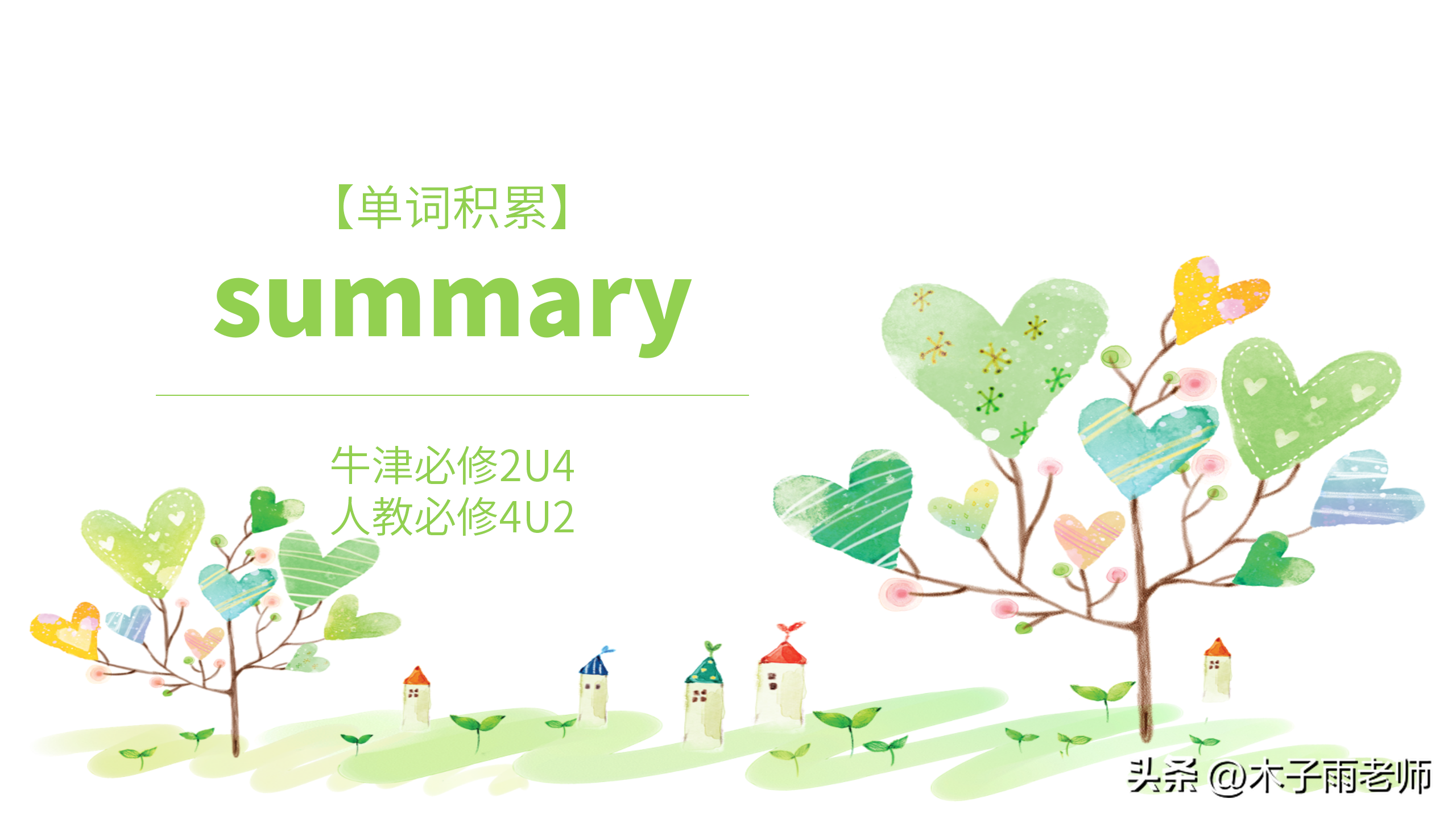【简介】感谢网友“雕龙文库”参与投稿,这里小编给大家分享一些,方便大家学习。
1、陈述句主语是-one, -body 时,疑问部分主语用they
Nobody says a word, do they ?
2、陈述句主语是-thing, this, that 时,疑问部分主语用it
Everything seems all right, doesnt it ?
3、陈述句主语是从句、动词不定式、动名词时,疑问部分用it
Swimming is great fun, isnt it ?
4、感叹句的反意疑问句 (感叹句的附加疑问句,其谓语要求用否定句。)
What fine weather, isnt it?
5、祈使句的反意疑问句
Do that, will you ? (wont you )
6、Lets , Let us
Lets go, shall we ? Let us go, will you ?
7、Im
Im interested in English, arent I ?
8、I wish
I wish I were you, may I ?
9、含had better, would rather, would like to do
Youd better come early, hadnt you ?
Youd rather work than play, wouldnt you ?
10、陈述句部分含下列否定词时,疑问部分用肯定
few, little, hardly, never, no one, no
There is little ink in your pen, is there ?
11、加前后缀构成的否定,疑问部分仍然用否定
Its unfair, isnt it ?
12、陈述部分有must
①must be 对现在情况进行推测
He must be very tired, isnt he ?
②must have done (对过去推测) 有过去时间状语
He must have come yesterday, didnt he ?
③must have done (由过去延续到现在)
He must have lived here at least 10 years , hasnt he ?
④must + v. 一定要, 必须
You must renew the book, neednt you ?
13、当陈述部分是一个(带that引导宾语从句的)主从复合句时,附加疑问句的主谓要和主句的主谓保持对应关系。但是, 当陈述部分的主语是:I suppose, I think, I believe, I imagine, I expect等结构时,附加疑问句的主语和谓语要和从句的主语,谓语保持一致关系。而且要注意到否定的转移问题。
14、当陈述部分是Im sure that,;we are sure;Im afraid that;We are sure that;I feel sure that 等后面跟宾语从句时,反意疑问句与后面的宾语从句一致。
15、当陈述部分是并列句时,附加疑问句的主谓语要合离它最近的句子的主谓保持对应关系。
16、在口语和非正式文体中,为了加强语气,只是表示某种惊奇、怀疑、反感、讽刺等感情而并不是为了寻求回答,这时前后两部分的肯定、否定是一致的。
如: Oh, he is a writer, is he?
Youll not go, wont you?
1、陈述句主语是-one, -body 时,疑问部分主语用they
Nobody says a word, do they ?
2、陈述句主语是-thing, this, that 时,疑问部分主语用it
Everything seems all right, doesnt it ?
3、陈述句主语是从句、动词不定式、动名词时,疑问部分用it
Swimming is great fun, isnt it ?
4、感叹句的反意疑问句 (感叹句的附加疑问句,其谓语要求用否定句。)
What fine weather, isnt it?
5、祈使句的反意疑问句
Do that, will you ? (wont you )
6、Lets , Let us
Lets go, shall we ? Let us go, will you ?
7、Im
Im interested in English, arent I ?
8、I wish
I wish I were you, may I ?
9、含had better, would rather, would like to do
Youd better come early, hadnt you ?
Youd rather work than play, wouldnt you ?
10、陈述句部分含下列否定词时,疑问部分用肯定
few, little, hardly, never, no one, no
There is little ink in your pen, is there ?
11、加前后缀构成的否定,疑问部分仍然用否定
Its unfair, isnt it ?
12、陈述部分有must
①must be 对现在情况进行推测
He must be very tired, isnt he ?
②must have done (对过去推测) 有过去时间状语
He must have come yesterday, didnt he ?
③must have done (由过去延续到现在)
He must have lived here at least 10 years , hasnt he ?
④must + v. 一定要, 必须
You must renew the book, neednt you ?
13、当陈述部分是一个(带that引导宾语从句的)主从复合句时,附加疑问句的主谓要和主句的主谓保持对应关系。但是, 当陈述部分的主语是:I suppose, I think, I believe, I imagine, I expect等结构时,附加疑问句的主语和谓语要和从句的主语,谓语保持一致关系。而且要注意到否定的转移问题。
14、当陈述部分是Im sure that,;we are sure;Im afraid that;We are sure that;I feel sure that 等后面跟宾语从句时,反意疑问句与后面的宾语从句一致。
15、当陈述部分是并列句时,附加疑问句的主谓语要合离它最近的句子的主谓保持对应关系。
16、在口语和非正式文体中,为了加强语气,只是表示某种惊奇、怀疑、反感、讽刺等感情而并不是为了寻求回答,这时前后两部分的肯定、否定是一致的。
如: Oh, he is a writer, is he?
Youll not go, wont you?








